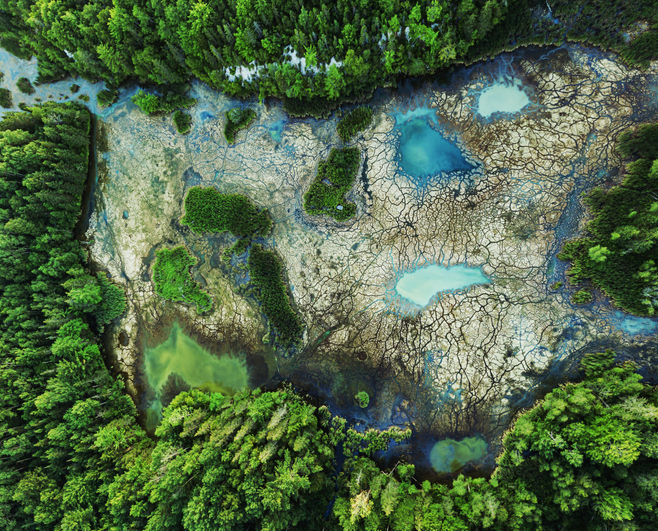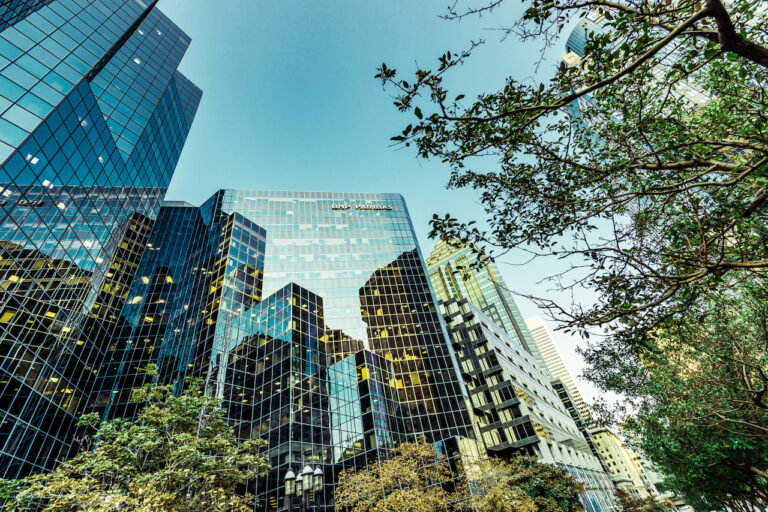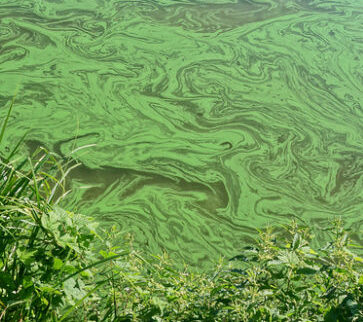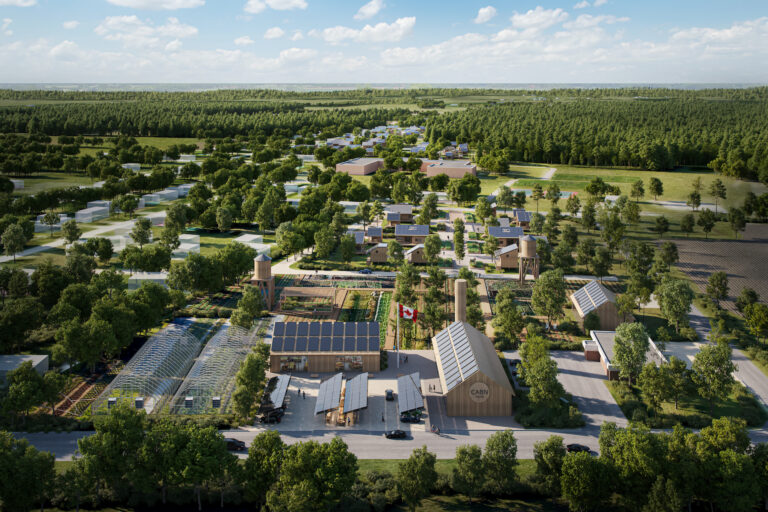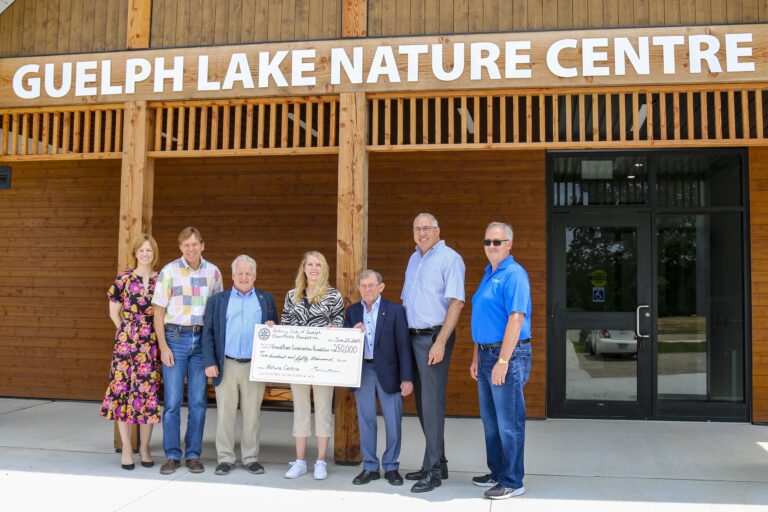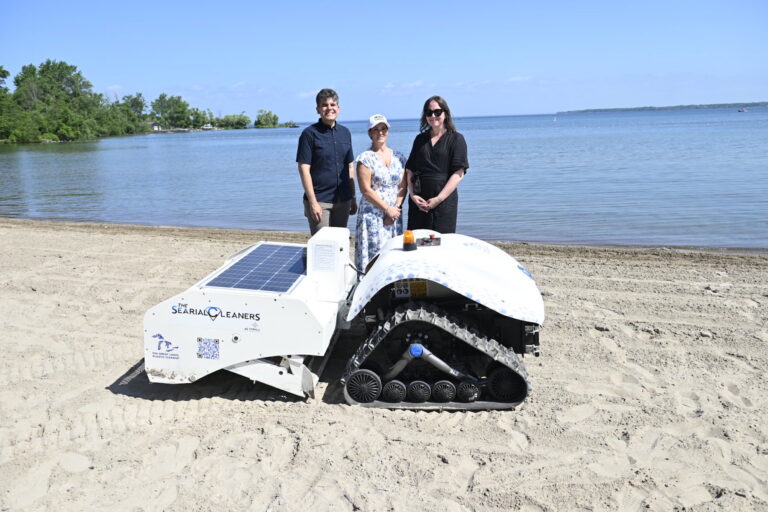Tuesday, July 1, 2025
By Saul Chernos
When flames from this year’s record-breaking forest fire season drew perilously close to the outer reaches of Yellowknife, municipal officials knew they had to protect the Northwest Territories capital from the kind of structural and environmental damage that has left communities across the country facing costly remediation and restoration.
Images of vast acreages of darkened toothpicks, the skeletal remains of buildings and cars, and helicopter pilots hovering over flames and plumes of smoke left no doubt about the intense destruction from coast to coast to coast. The 2023 wildfire season has seen the most land mass burned in Canada since reliable record keeping began more than a half century ago. From March to mid-October, roughly 6,500 fires had burned more than 180,000 square kilometres, according to the Canadian Interagency Forest Fire Centre.
While smoke hampered air quality across much of Canada and the United States, even crossing the Atlantic, the fires have had particularly staggering impacts at ground zero. All summer long, news reports paraded accounts of personal displacement and trauma and widespread damage to property and the environment. The stories vary widely yet bear eerie similarity. In Nova Scotia, late spring wildfires gutted more than 200 homes, businesses, and other structures a hair’s breadth from Halifax. Blazes in British Columbia torched hundreds of buildings along the Trans-Canada highway and raged out of control on Vancouver Island, in the Lower Mainland, and throughout the Interior. In Alberta, more than 100 structures burned in the community of Fox Lake, alone.

Cameron Lake Bluffs wildfire heavily impacted major travel routes. This image was taken during a closure on B.C.’s Highway 4. Image courtesy of British Columbia Ministry of Transportation and Infrastructure.
The cost to communities
With the increasing frequency and intensity of wildfires attributed in part to a warming climate and changing weather patterns, the elephant in the room might be the mushrooming cost. Natural Resources Canada (NRCan) estimates that Canadian wildfire management agencies have spent between $800 million and $1.4 billion annually over the last decade, with expenditures rising year over year, with no relief in sight. “Future projections suggest that the cost of wildland fire protection will continue to increase rapidly, particularly in western Canada,” NRCan said in an outlook posted to its web site.
Insurance companies are also feeling the impact. Intact Financial reported that catastrophic events in the third quarter of 2023 totaled $611 million, with over 90 per cent of the losses in its Canadian segment driven by 14 severe weather events. It stated around a third of the losses were attributable to the wildfires in B.C. and N.W.T.
What does this mean, then, for regions dealing with wildfires encroaching on populated areas? With insurers beginning to introduce coverage exclusions for climate related disasters, former Toronto mayor David Miller, managing director of the C40 Centre for City Climate Policy and Economy, says the situation might need a rethink.

David Miller, former Toronto mayor and managing director of the C40 Centre for City Climate Policy and Economy. Image courtesy of Talk Shop Media.
“Are there places that we shouldn’t be continuing to build communities, and if there are communities in those places what do we do if there’s going to be regular fires of the magnitude that we’ve seen this summer? What do we do to support the people who live there?”
Miller, who recently authored Solved: How the Great Cities of the World are Fixing the Climate Crisis (University of Toronto Press), says the costs to municipalities located in fire-prone regions are potentially staggering.
Prevention and planning
With fire surrounding much of Great Slave Lake and evacuations underway in the communities of Hay River and Enterprise, several First Nations and, ultimately, the capital itself, Yellowknife Mayor Rebecca Alty and her colleagues moved swiftly to build a moat around their castle. By clear-cutting 100-metre-wide swaths just inside the perimeter, particularly along the western front in close proximity to houses and other buildings, the plan was to deprive any advancing flames of as much kindling as possible and effectively buffer the city. City administrators engaged more than 20 heavy equipment companies, and crews worked 12 to 18 hour days for nearly three weeks removing trees and other dry fuel and hauling it to a safe location. “We’re still calculating it, but it will be a multimillion-dollar bill,” Alty says, comparing the total area cleared to 150 soccer fields.

Yellowknife Mayor Rebecca Alty. Image courtesy of City of Yellowknife.
Enterprise, a hamlet with a population of 120 people on the south side of Great Slave Lake, lost a horrific 90 per cent of its houses and businesses, and Hay River and K’atl’odeeche First Nation also suffered significant losses, but the 2023 wildfires spared Yellowknife. With help from Mother Nature, firefighters successfully maintained a 15-kilometre gap between the flames and the city limits, so the moat was never tested. “It’s tough to see the loss of all those trees,” Alty says. “But in future fire seasons this will hopefully be the protection we need.”
Kelowna, B.C. took a like-minded approach. Following several significant wildfire seasons in B.C., the city developed its now two-year-old community chipping program, which offers free curbside removal of trees and shrubbery deemed at highest risk of catching and spreading wildfire. “These are things like cedar, juniper, and other conifer shrubs that have needles and tend to be thick, dead and dry on the inside and are highly flammable,” says Tara Bergeson, urban forestry supervisor with the City of Kelowna.
The program adopts guidance from FireSmart BC, an intergovernmental agency, and its emphasis is on vegetation close to homes and other structures. Residents are responsible for cutting material on their property and piling it for disposal, and Bergeson says city crews have collected more than 150 metric tonnes over two seasons. Ever sensitive to desires for privacy, the city promotes FireSmart-approved lilac and barberry bushes and other low-combustible alternatives where the sap is more watery than oily and the leaves have higher moisture content. The city also promotes permanent, non-flammable fencing, and the use of heat resistant building materials.

Tara Bergeson urban forestry supervisor with the City of Kelowna in British Columbia. Image courtesy of City of Kelowna.
Kelowna has also undertaken comparable measures on the 900 hectares of urban forests and public spaces under its own purview, removing excess trees and ground fuels where necessary, and fencing in city and provincial Crown grasslands to enable targeted cattle grazing to contain grass fires. “We had two fires in the City of Kelowna this summer, significant ones that had potential for damage or did cause damage, and I can say in no uncertain terms that fuel mitigation treatments were absolutely effective in allowing suppression crews to action the fires more aggressively and more safely,” Bergeson says.
Reclamation and remediation
Despite considerable work to reduce forest fuels in urban areas, however, what happens in the forests doesn’t necessarily stay in the forests. This is particularly true when wildfires are intense and difficult to suppress. Kelowna did lose some buildings, and several communities to the city’s west and northwest and elsewhere in the Interior were significantly impacted.
Sam Bellion, a spokesperson for the BC Wildfire Service with the provincial Ministry of Forests, says that after fires are suppressed recovery teams need to conduct a thorough analysis to understand what’s potentially involved before they can initiate any meaningful remediation. “Many of our forests are dependent on periodic, low intensity fires to clear surface litter, recycle nutrients back into the soil, promote new growth, eradicate pests and disease, maintain wildlife populations, and reduce future wildfire intensity,” Bellion says.

The site of the Grouse Complex fire of 2023 in Kelowna, B.C. Image courtesy of City of Kelowna.
While some wildfires pose little risk, more intense ones can severely burn soils and damage habitats and infrastructure. “These types of wildfires are typically fueled by a combination of high temperatures, prolonged drought, strong winds, and excessive fuel loading due to historic suppression of fire on the landscape,” Bellion says. “(Severe) wildfires alter vegetation cover and ground surface conditions, resulting in changes to the amount and flow pattern of water, which can lead to soil erosion, debris flows, landslides, or floods, as well as hamper (the) natural recovery of native ecosystems.”
Bellion describes a recovery and management approach on par with that recommended by FireSmart. “Recovering an area affected by wildfire aims to improve the sustainability and resiliency of the landscape where feasible and to reduce vulnerability and future negative impacts by wildfire,” she says. Furthermore, the BC Wildfire Service acknowledges that suppression and reclamation activities often leave their own footprint. Heavy equipment can alter natural drainage systems and waterbodies, exposed soils can enhance surface erosion and instability, and new roads and pathways can expose otherwise secluded areas.
Once a wildfire is deemed under control and the site is a known entity, rehabilitation specialists can decide if intervention might be needed to repair the function of the ecosystem and initiate recovery. The ministry’s geomorphologists and soil scientists are tasked with identifying threats to public safety from erosion, floods, rockfall, landslides, and avalanches, and estimating risks. Reports are shared with B.C.’s Ministry of Emergency Management and Climate Readiness, local governments, First Nations, and other stakeholders, who work together to plan and respond as needed. On private lands, rehabilitation is guided by Wildfire Risk, an arm of the BC Wildfire Service that oversees and manages insurance claims, litigation, and recoveries.

The Elephant Hill fire of 2017, taken along Scottie Creek. Image courtesy of Secwepemcúl’ecw Restoration and Stewardship Society
In recent years, Indigenous communities have increasingly undertaken reclamation activities on their traditional lands. West of Kamloops, B.C., Angela Kane is deeply involved in a massive replanting underway since 2019, two years after wildfires burned through nearly 200,000 hectares at nearby Elephant Hill. The blaze impacted eight First Nations, so they formed the Secwepemcúl’ecw Restoration and Stewardship Society to take collective responsibility for returning the land as much as possible to its original state.
“We sat down with our chiefs and regional district managers from the provincial government and had a conversation around wildfire recovery and what would it look like,” recalls Kane, band and lands and natural resources manager with High Bar First Nations at the time. Kane, now the Society’s CEO, says provincial replanting efforts tended to focus on pine and fir species, with timber harvesting mind, and the First Nations wanted a more balanced ecosystem that includes deciduous species in order to help prevent fires from spreading rapidly and also support and stabilize river and stream banks, thus keeping the region’s riparian ecosystems intact.
With federal funding, the Society initiated a multi-year campaign to replant areas surrounding the Bonaparte River and other waterways within the Elephant Hill wildfire area. Still, numerous challenges have arisen. “The Elephant Hill fire burned so hot that it created a hard-pan surface, which did not allow for water penetration, and we started seeing landslides that created road closures and extreme impacts to our rivers,” Kane says. Sampling revealed a loss of soil nutrients and natural seed stock that normally survive more moderate fires, so recovery teams are researching the use of biochar and coconut husks within the bag-like plugs they use to nurture the roots of new growth.
The Canim Lake fire of 2021. Image courtesy of Secwepemcúl’ecw Restoration and Stewardship Society, a First Nations organization.
“We just finished planting 650,000 seedlings, next year we’re planting 500,000, and by 2026 we’re looking to plant a million trees,” Kane says, adding that it will likely take decades, but the soils and forests will eventually replenish. Because commercial nurseries rarely stock deciduous species such as willow, aspen and cottonwood even through these are long endemic to the region, the Society collects local seed stock and is looking to expand and partner with its current nursery to help it specialize in native vegetation.
While First Nations and other parties work to reclaim forests and ecosystems, wildfires inevitably destroy homes and other buildings as well as vehicles and farm machinery, launching an array of pollutants into play. That’s where remediation contractors enter the picture. David Meikle, regional manager with Milestone Environmental in Langley, B.C., says his company does everything from habitat restoration and climate resiliency work to cleaning up contaminated sites, and forest fires are a prime factor driving his sector.
Often retained by insurers when private property is involved, remediation contractors typically begin by assessing site particulars such as the function and age of structures. Contractors look for signs of asbestos, which generally survives even the harshest blazes, and lead, which can be found in paints. Building materials, vehicles and heavy machinery can also contain metals and volatile organic compounds, and downed hydro pole transformers sometimes have PCBs. Even ash can be highly alkaline, which is problematic for vegetation, and some firefighting foams contain PFAS, chemicals used to make fluoropolymer coatings and products that resist heat, oil and water but are facing increasing scrutiny. A chemical analysis will help determine the level of contamination on site and in any soils, concrete and asphalt removed for disposal.
“We’ll work with the consultants to figure out what the surficial removal has to be — how deep and how wide,” says Meikle. “This helps us understand what we’re dealing with and what we have to do in terms of disposal.”
Contaminated sites are often complex, with some potential for compounds to aggregate in stormwater and leach offsite, but the methods used for cleaning up are relatively straightforward. Compounds, especially metals, generally don’t sink too deeply, and the ground acts as a filter, so crews often use excavators and other heavy equipment to scrape surface layers for disposal. Milestone uses large vacuum trucks to suck up liquids, as well as mobile treatment plants equipped with activated charcoal, sand, or other filters and media to treat water on site.
“You have to know what you’re dealing with in terms of contaminants to figure this out, but the vessels could range from the size of a fridge to the size of a car,” says Meikle. When potential complications are perceived, Milestone retains environmental specialists for guidance. Chemicals and heavy metals generally go to specified hazardous waste facilities, while PCBs and PFAS require thermal destruction.
News reports have been awash in images of burnt vehicles, but plastics and metals are of greater concern than gasoline. “If a vehicle’s been burnt, any bulk hydrocarbons like the oil and gas in the tank are mostly burnt off,” explains Meickle. “However, you will have residual hydrocarbon impacts in the ground from the melted tires, plastics, and burnt oils and fuels. These will typically be shallow if the cleanup occurs shortly after the fire. I would expect some sort of scrape or cleanup from underneath the vehicle, but it’s not going to mobilize very far. You might take out a foot of material or less, but you’re not having to dig big excavations.” Meikle has never dealt with a petrol station impacted by fire but says underground storage tanks are tightly sealed and generally void of oxygen. “It would burn at the pump and then just fizzle out,” he points out.
From his perch, Meikle anticipates environmental services will be increasingly needed as factors such as climate change continue to exacerbate the frequency and intensity of wildfires. “In B.C. every year, we’re seeing fires encroaching on civilization. As towns grow and spread and infringe on nature, it’s bound to happen. So, for us, it’s understanding how to go through the cleanup in a safe and efficient manner.”
Meikle says he’s particularly struck by ongoing advances in knowledge and expertise. “For years, nobody thought at all about firefighting foam, and now it (PFAS) is a big topic for everybody. Anybody can push over a burnt building and scrape up a foot of dirt, but understanding the nuances around where things can go, as well as how to transport them safely — that’s expertise we’re able to bring.”
What are the next steps to prevent the hot mess too many Canadians experienced this summer? In addition to the important wildfire preventative measures, there are also economic considerations. “The starting proposition has to be the insurers are obligated,” emphasizes Miller. “But it’s so enormous and so complicated that financial assistance from the relevant provincial or territorial or national government has to be available. The question is what happens to a Fort McMurray when it happens again and again? What’s the ethical and moral obligation when it happens in a place for a second, third, or fourth time? It’s a really difficult question, but it’s one we have to think about.”

Saul Chernos is a freelance writer based in Toronto, Ontario.
Featured image of widlfire burning near residential areas in the Okanagan Valley. Credit: Getty Images.





